Riddles, those clever lyrical conundrums meant to perplex and amuse, have been around for millennia. Since ancient times, riddles have allowed people to exercise their wit, test their intelligence, and engage in playful competition. Though modern riddles often take the form of simple “what am I?” brain teasers, classic riddles have a rich history intertwined with myth, religion, oral traditions, and popular culture.
Riddles in Ancient Civilizations
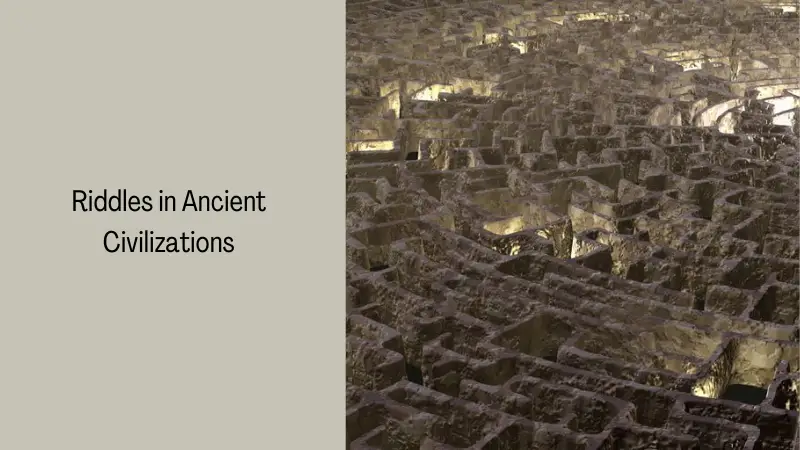
Some of the earliest records of riddles come from ancient Egypt, where hieroglyphic writings dating back to 2600 BCE tell of a prince’s competition of riddles with common people. The ancient Mesopotamians were also known for their riddle contests, many of which appeared in cuneiform texts from the second millennium BCE. The Babylonian Hymn to Ishtar contains an early example of the “Riddle of the Sphinx,” in which the goddess Ishtar poses a series of perplexing questions:
My figure is crooked, I rest on my hind parts; My heart is wise, but my arms are stupid. Who am I?
This style of descriptive riddle that reveals attributes of the answer was common across ancient cultures. The ancient Greeks, too, enjoyed riddles, incorporating them into myths, dramas, and oratory.
Riddles in Folklore and Oral Traditions
Before the spread of literacy, riddles were an integral part of oral storytelling traditions across the world. Many ancient cultures used riddles in coming-of-age ceremonies, marriage rituals, and religious practices. African folktales tell of villagers competing with riddles, Asian myths contain gods and creatures that speak in riddles, and some Native American tribes used riddles to teach children lessons.
Riddles frequently appeared in early European folktales as well. Tales of magical creatures posing riddles can be traced back to Old English legends, Irish and Scottish myths, and the Icelandic Eddas. Storytellers often presented riddles dramatically, having characters’ lives or fortunes depend on solving clever word puzzles.
Famous Riddles from the Greek and Roman Periods
Some of the most well-known classic riddles originate from ancient Greece and Rome. The myth of Oedipus and the Sphinx tells of Oedipus encountering a monstrous creature that devours those who cannot answer her riddle, “What goes on four feet in the morning, two feet at noon, and three feet in the evening?” Oedipus solves the puzzle correctly: man, who crawls as a baby, walks upright as an adult, and uses a cane in old age.
Plutarch’s Lives, a famous biographical text from around 100 CE, records the Roman emperor Tiberius’s practice of posing difficult riddles to confound his rivals. One such riddle involves determining what creature walks on four legs, then two, then three, described as an “exceedingly complicated and obscure” puzzle.
Medieval and Renaissance Riddles
In medieval England, rhyming riddles gained popularity. No longer about gods and monsters, these riddles described everyday objects using imaginative metaphors, as in this example from the 10th-century Exeter Book:
I’m by nature solitary, scarred by spear and wounded by swords, weary of battle. I frequently see the face of war and fight hateful enemies, yet I hold no hope of help being brought to me in the battle before I’m eventually done to death. In the stronghold of the city sharp-edged swords, skillfully forged in the flame by smiths, bite deeply into me. I can but await a more fearsome encounter; it is not for me to discover in the city any of those doctors who heal grievous wounds with roots and herbs. The scars from sword wounds gape wider and wider death blows dealt by the hands of my enemies. But on my breast, an emblem of the Saviour, made of gold, provides solace and hope.
This vivid personification of a shield was characteristic of Old English riddles, which described inanimate objects as if they were living creatures engaged in dramatic exploits. Composing riddles—and guessing the answers—became a popular literary pastime.
During the Renaissance, collections of bawdy, irreverent riddles also appeared, written by authors like Poggio Bracciolini. The popularity of riddles continued through the Enlightenment era and into the 19th century.
Riddles in Contemporary Culture
While no longer used in ceremonies or contests of wit, riddles remain an enjoyable linguistic puzzle in the modern age. Contemporary riddles tend to be simple “what am I?” brain teasers, unlike the eloquent classical riddles of yore. However, references to legendary riddles still appear in popular stories today.
J.R.R. Tolkien’s novels adapted the “Riddle Game” tradition, featuring characters like Gollum challenging Bilbo Baggins to solve cryptic rhyming riddles. blockbuster films like Batman Begins recreate the Riddler villain obsessed with puzzles and wordplay. Sphinx-like creatures appear in fantasy games and anime shows. Given the enduring popularity of riddles throughout history, these mysterious poetic puzzles will likely continue challenging and delighting audiences for generations to come.
Frequently Asked Questions About Classic Riddles
What made riddles an appealing form of entertainment historically?
In societies where few people were literate, riddles provided an engaging oral activity that tested intellectual skills like creativity, metaphor, and lateral thinking. Riddles brought storytelling to life in a competitive format.
Why did ancient cultures incorporate riddles into rituals and ceremonies?
Riddles often involved themes of wisdom and knowledge. Solving riddles demonstrated mental acuity, making the practice well-suited for rituals of transition to adulthood, marriage, or social status.
How have riddles evolved over time?
Early riddles were descriptive, focusing on the attributes of the answer. Medieval riddles became more metaphorical and narrative. By the Renaissance, humorous double entendres appeared. Today’s riddles are often simple one-liners.
What modern works adopt influences from classic riddles?
Elements of traditional riddle lore, like the Riddle Game and mysterious Sphinx, appear in fantasy novels, films, TV shows, anime, and games. The Batman villain Riddler is obsessed with riddles.
Why do riddles continue to fascinate people?
Riddles allow us to show off our mental skills in a fun way. Deciphering riddles gives our brains an appealing challenge. The lyrical, metaphorical language also adds an artistic element.
The Enduring Appeal of the Classic Riddle
For millennia, across cultures and continents, the classic riddle has tested human intelligence, sparked competition, and added an element of mystery to storytelling. This unique form of wordplay continues to appear in games, books, and pop culture today, reminding us how joy can be found in puzzling out a sphinx-like conundrum. So next time you encounter a creature that walks on four legs in the morning, two legs at noon, and three legs in the evening, embrace this opportunity to engage with an ancient tradition—and prepare to be enchanted by the riddle.

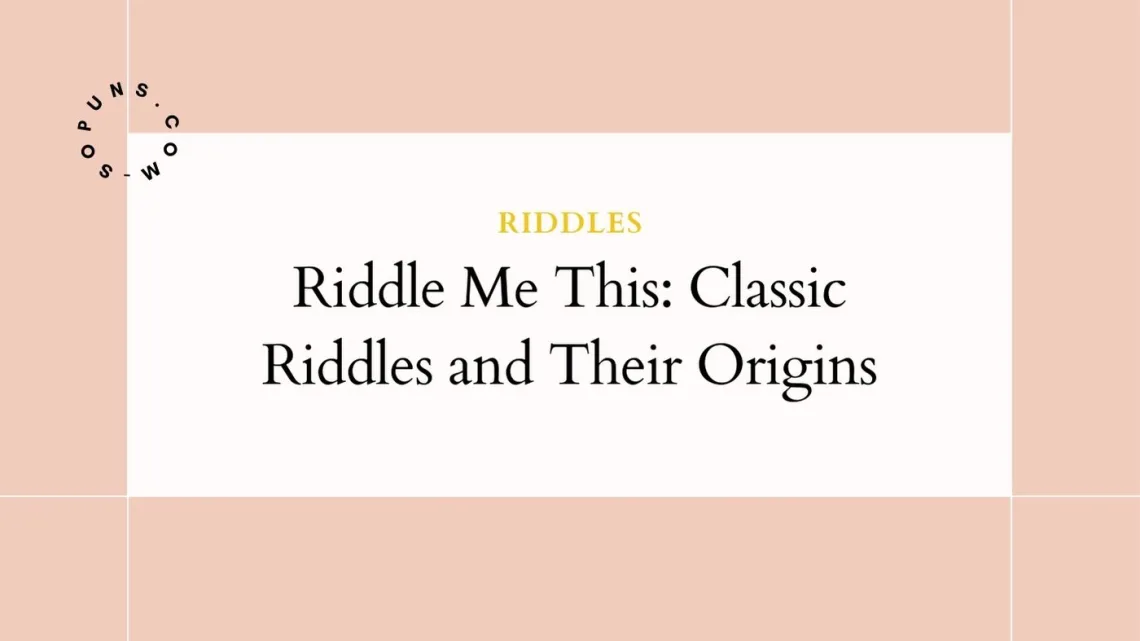
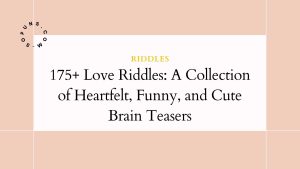
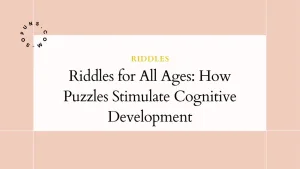
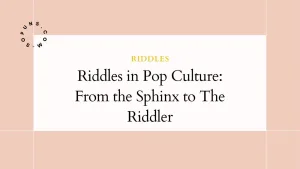
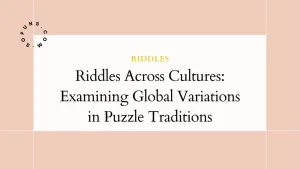
No Comments